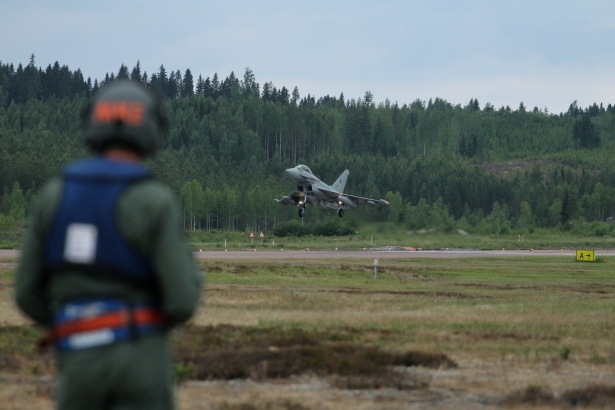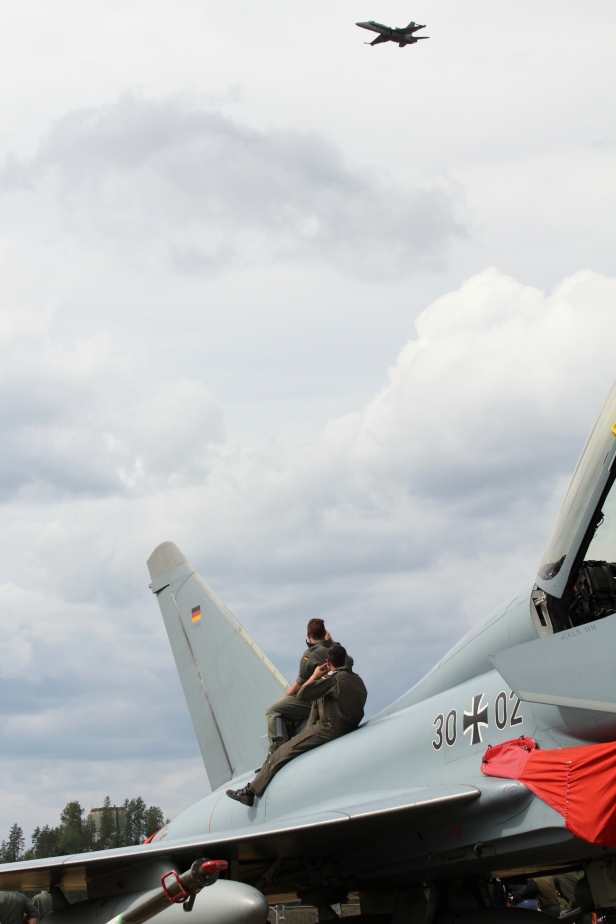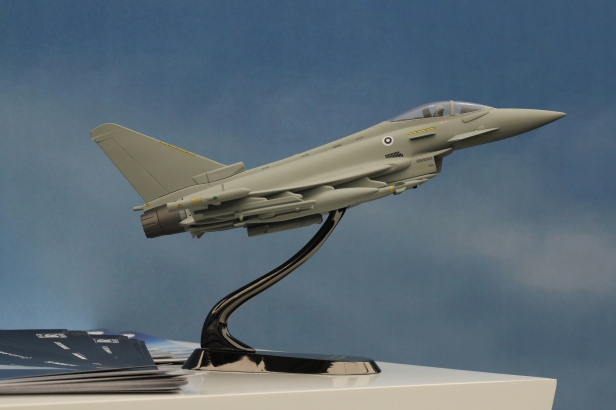25 years ago Finland was looking for an air superiority fighter to replace the ageing J 35 Draken and MiG-21Bis which dominated the ranks of the air force. As is well known, the choice fell on the F/A-18C Hornet, which for the first two decades served solely in the air-to-air role (officially designated F-18C by the Finnish Air Force). But the times they are a-changin’, and with MLU2 the multirole potential was finally brought into play in the Finnish Air Force as well. This also means that for HX to meet the matching set of capabilities, it must be able to fulfill different roles, including air-to-air, air-to-ground, ISR, maritime strike, and stand-off precision strike. The last is treated as a unique requirement by the Finnish Defence Forces, as it requires a completely different setup compared to ‘ordinary’ air-to-ground missions.

However, while the aircraft will certainly occupy a host of roles, there’s little question that air defence still is and will remain the core mission of the Finnish Air Force. The ample availability of indirect fire, coupled with the planned acquisition of more accurate and longer-ranged munitions for both barrel and rocket artillery, means that there are several ways to kill anything moving on the ground. But even with the upcoming GBAD program, getting proper air defence coverage at medium and high altitudes is another issue. Here the teamwork between air and ground-based systems is a must, and HX will be the air component at least past 2050.
This suits the Eurofighter consortium just fine. While the marketing slogan might be that it is “a platform for any weapon, any mission”, it is clear that the concept owes much to the requirement of an air defence fighter that emerged a number of decades ago. This is most visible in the thrust-to-weight ratio of 1.15, well above both the F-15 and the F-16, which together with the aerodynamically rather clean design gives the aircraft an edge over the competition when it comes to raw speed and altitude performance. Over Syria and Iraq, Typhoon packages handle deconfliction of the air space by simply transiting above the rest of the aircrafts operating in the area, using their speed and endurance to quickly transit between holding areas and targets.
The speed is and obvious benefit in the QRA role as well, a key part in the life of both the Finnish as well as for the partner nations. This is where the Typhoon really shines. Being airborne in just over 1,000 feet (305 meters), the fighter is supersonic within two minutes from scramble. Importantly, even a light air-to-air load includes four semi-recessed Meteor and two ASRAAM or Iris-T, with the full load of six Meteors and two short-range missiles (or four plus four) already starting to put hurt into the arms budget of most air forces if more than a handful of fighters are to be launched. Compared to the current full F-35 load (including external stores) of four shorter-ranged AIM-120C AMRAAM and two AIM-9X, that is a significant difference both in quantity and quality (the F-35 is slated to receive upgrades to the capacity at some point in the future).

Meanwhile, the Typhoon is proving to be no hangar queen (Germany being the exception, but that is a reflection of the readiness of the German Defence Forces as a whole). The preceding Italian Typhoon rotation to BAP which took place in 2015 sported a 99,4% availability rate, and during the recent NATO Tiger Meet the Eurofighter had the best mission availability rate of all involved fighters. As test pilot Paul Smith puts it:
If you put fuel and weapons on it, it just keeps flying.
The combination of large amounts of advanced weapons carried, long-ranged sensors, and a significant endurance (further improved by the large drop tanks routinely carried on stations 3 and 11) means that the aircraft in high-end exercises often is the first aircraft in and the last aircraft out. The semi-recessed Meteors and light outer stations (no. 1 and 13) also mean that even in a heavy air-to-ground load, the aircraft has four long-range and two short-range air-to-air missiles to defend itself or other parts of the airspace.
But while the fighter has a clear air-to-air pedigree, recent upgrades has made it a true multirole platform. The British Typhoons have currently been hard at work employing the light Brimstone anti-vehicle/low-collateral damage missile and the Paveway IV laser/GPS/INS-guided 500 lbs (230 kg) bomb over Iraq and Syria. The Brimstone is carried on triple launchers, while the Paveway IV can be carried on single- or twin-launchers, leading to an impressive amount of weapons a single aircraft can bring to the battlefield. Instead of the Paveway IV, the German Air Force carry the corresponding GBU-48 Enhanced Paveway II.
However, Finland has never seen the prime role of the Air Force as being that of quashing large amounts of enemy armour, so the Brimstone might not be high on the wishlist. More interesting are the cruise missiles of the aircraft, with BAE Systems marketing both the Storm Shadow (used by RAF in the recent Syrian strikes) and the Taurus KEPD 350 (integrated onto the German Typhoons). Both are very much the kind of weapon that will be acquired to fill the void left by the AGM-158 JASSM. The really interesting weapon is however the SPEAR 3, which is currently in flight testing on the Typhoon.
Outwardly, the SPEAR looks rather like the Brimstone, but while the Brimstone has a rocket engine to boost it up to speed after which it coasts along until hitting something, the SPEAR is a cruise missile with pop-out wings and a small turbojet. This gives it significantly more range and the ability to fly at low altitudes, and while the Brimstone is a AGM-65 Maverick replacement and Storm Shadow is a JASSM replacement, the SPEAR is something completely new. The low weight (100 kg) and triple racks means that they can be used in larger numbers compared to the ‘silver bullet’-role that traditional cruise missiles occupy. At the same time, their stand-off range and smart attack modes (such as synchronised attacks from multiple directions) means that they can reach targets which earlier would have been considered too far away or too well defended. The warhead might be too small for hardened buildings, but will nicely take out vehicles, light buildings, and small vessel (or disable elements of capital ships).
Good examples of these kinds of sub-strategic targets are command posts, air defence radars, and high-value vehicles (armoured or soft-skinned). To further highlight the interest from the Finnish Defence Forces for this kind of ability to “shape the battlefield”, as the BAE Systems marketing line goes, it is notable that the targets for the Finnish JASSM living firings earlier this year were shaped suspiciously like Russian Iskander ballistic missile launchers or long-ranged SAM-launchers. While the cost of JASSM likely make it prohibitively expensive in a SAM-busting role, the SPEAR would be highly efficient. RAF is already planning on taking up the SEAD/DEAD role with the Typhoon/SPEAR-combination. The flexibility of the weapon would mean that the SPEAR would provide the Finnish Defence Forces with a SEAD, anti-armour, and anti-ship capability in a single stroke. All of these are mentioned as capabilities which the Finnish Air Force is looking at for HX, but which might prove too niche for dedicated single-role weapons.

But from where does a small country such as Finland get adequate targeting data for long-range cruise missile strikes? Here the Eurofighter consortium plays one of their unique selling points, in that the varied partner companies sport a large number of different capabilities, one of which is the Airbus Intelligence Defense and Space-division. This is one of the prime suppliers of satellite imagery, including synthetic-aperture radar ones. BAE Systems notes that a Finnish Typhoon-buy could include an unspecified satellite intelligence package. This shines an interesting light on one of the more curious air show-tweets made by any of the HX-contenders.


As for the Spear. It can and cannot be used against:
Hardened Buildings – No, according to you.
Vehicles – Finland is not the deserts of Arabia. A longer range against vehicles is not that useful.
Light Buildings – Yes.
Small vessels – Yes.
Disable elements on capital ships – No, they dont have the stand-off against the Admiral Gorshkov class frigate.
SEAD – Yes, in certain situations. Not against long range air defense systems.
The Airbus Intelligence Defence and Space Division is, according to you, one of the prime suppliers of satellite imagery including Synthetic Aperture Radar-satellites. BAE-systems notes that a Finnish Typhoon acquisition could include an unspecified satellite intelligence package. According to you.
First of all, SAR-satellites are not sent up in abundance. And they travell in Low Earth Orbits so that they need to have rocket boosters torching from time to time just to keep them up in orbit as long as they need to be up there, a couple of months maybe. Without the rocket boosters they would soon burn up in the atmosphere in a couple of weeks. They only send them up in critical situations. And it will cost, a lot! And you are probably going to need linking UAV:s between the satellites and your downloading stations which you also are going to need. And the accessability is going to be very limited probably. And they will have to send up a SAR-satellite or two solely for a Finnish utilizing purpose.
Traditional photo-satellites are not that frequently used today. It is not the most commonly used spy satellite.
No wonder BAE didn’t specify their services!
Just thought you would like to know that, brother.
There are a few different points here:
-As has been discussed here several times theoretical range of SAM’s shouldn’t be read as no-go zones. Yes, it’s nicer to stay outside, but especially with weapons with propulsion such as SPEAR which allows release at low altitudes the issue is smaller,
-Airbus has two SAR satellites currently in operation and a third on the way. Details in link posted,
-For Finland the question isn’t how to get first class intelligence satellites, but how to get any intelligence at all. Here regular imagery updates are valuable, and Airbus certainly has the ability to to provide something Finland would find valuable,
-I must admit I can’t remember any offer for your books, but I can assure you I don’t have a political program against books. Books are nice and I usually accept books I find interesting.
No wait, the guy who didn’t reply to my book offer was Stefan Forss at the National Defence University, Department of strategic and Defence Studies in Helsinki. Probably because I presented myself as Defense political spokesperson for the very marginalized Christian Values Party in Sweden. They probably only deal with state sponsored persons and state representants in those circuits. Anyway, the books are written mainly in the Swedish language.
Those SAR-satellites will only last for about six months, I guess. Then they will fall into the atmosphere and burn up.
Pity then that the oldest one (TerraSAR-X) has passed ten years of operational service and shows no sign of burning up.
My wrong then. Then it is used on higher altitudes.
That is the problem with using professional litterature that is a number of years old, or if the litterature emanates from only one or a few persons in basicly a non-space contender country. Technology also makes progress and different countries have different levels on different technology. I think my books gives an accurate picture of the bulk of what I write. But only a small part of it are about SAR-satellites. My apologies!
My mind played me a trick! I have checked with my book.
The orbiting reconnaisance satellites, who can identify vessels with SAR-radar, cirkulates the earth in Low Earth Orbit (LEO) with an orbit altitude between 160-2 000 km with an orbit time between 88 minutes up to a 127 minutes. In the lowest orbit, 160 km, it probably takes about two days for the satellite to finally come down and burn up in the atmosphere without rocket boosters and/or fuel. I don’t know where I got the idea that SAR-satellites have a lifespan of six months, it is not in my books what I can find.
SAR-satellites have double the observation frequence since this satellite type can register objects even at night. SAR-satellites have a near polar orbit, which on our latitudes have an area observation cover of 80 degrees N and 80 degrees S latitude. One and the same satellite can register one and the same target maximum two times per day and satellite. Time per data down loading is near real time within horizon or 10-30 minuter. Satellites are likely to have store-and-forward.
If one uses an UAV or an aerostat with passive receiver, one increase the time window for the ground stations down loading. Such radar systems are called bi-static. The point with a bi-static radar system is that the UAV not so easily can be detected while the satellite is resonably safe in space orbit. But the UAV:s received information needs to be mediated and that counter the radar silence.
SAR satellites need anly solar panels to power them. The energy is enough for about 20 minutes per orbit of around 90 minutes.
Simulations at FOA (FOI) have shown that it is possible to jam SAR, but for good effect it usually is required that the jamming system is located in the target reconnaissance area, i.e. the main lobe.
If you had bothered to reply on my offer to you for a couple of free books in my book series you would have known this already. But politics kept you from it, I assume.
A few points to address:
– The high availability for QRA missions is not quite a feat to be honest – it’s a standard.
– Typhoons is for now ill-suited for long range strike missions, and that will not change unless it gets conformal tanks at some point, due to the poor design of wing station clearance and load capacity (in the current state, it’s either cruise missiles, or fuel tanks). And frankly, the EF is usually both quite thirsty and short on fuel compared to its counterparts.
– I’m not sure of the revelancy of the satellite intelligence point. Corporations play a much lesser role in providing military satellite intelligence compared to military operators (in the framework of government agreements). And unless Finland decides to buy a couple of satellites (unlikely…), Airbus DS doesn’t have much cards to play ; its GEO activity is not quite tailored for military use either way.
– Extending my point on intelligence, EF is not quite tailored for reconnaissance, much less than, say, F-35 or Rafale (Reco NG pod);